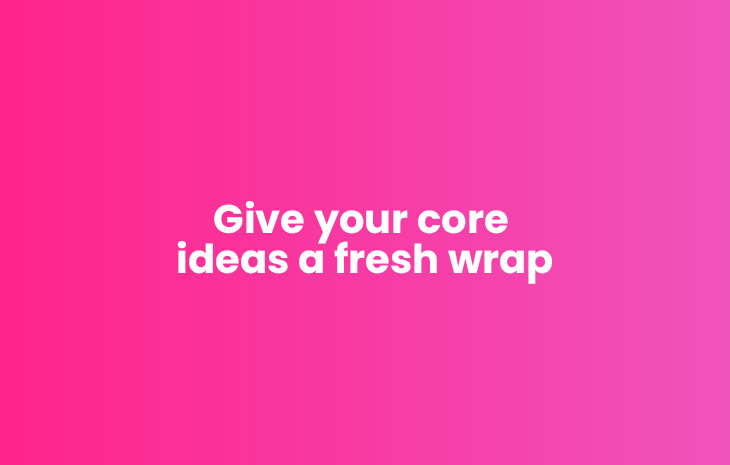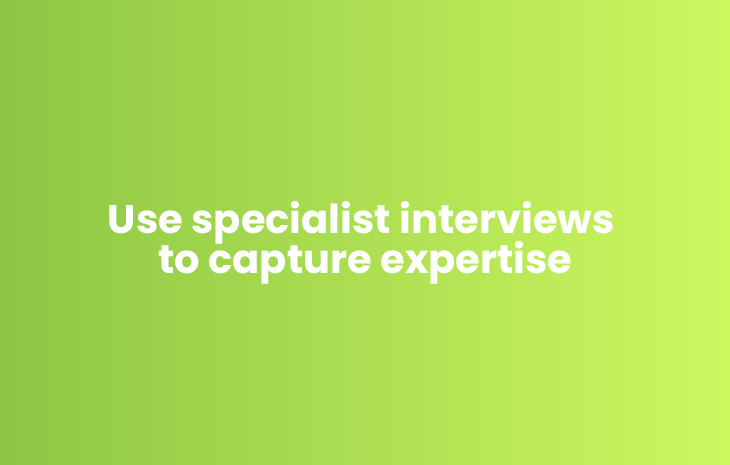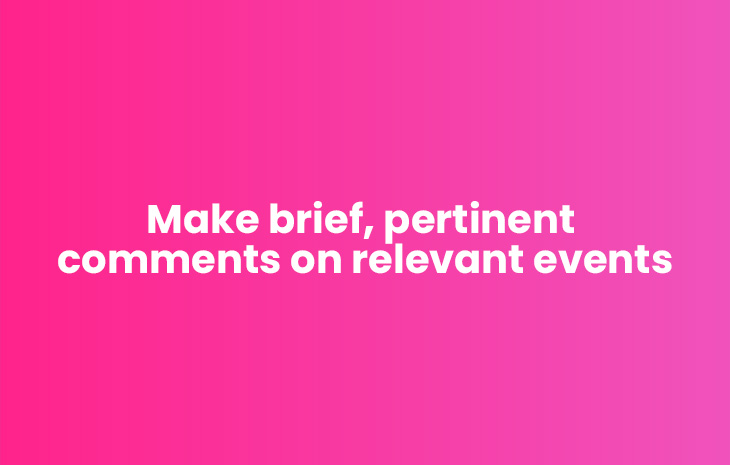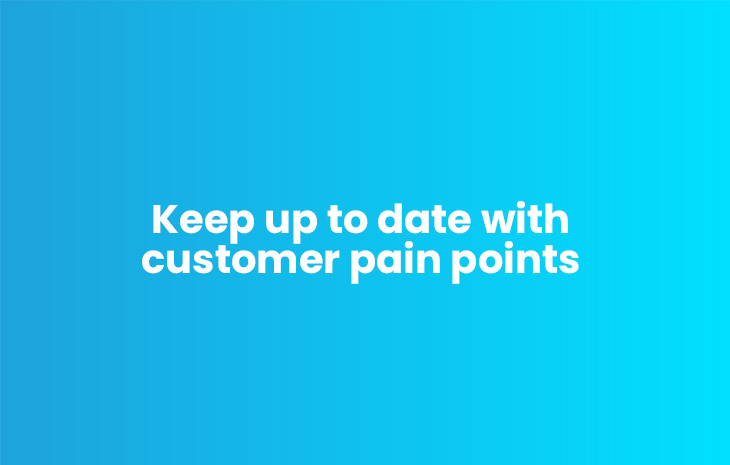Calls to action (CTAs) take up a tiny amount of time, money and space, yet punch well above their weight – improving conversion rates by up to 30%.
A great CTA gets readers clicking and will seriously increase your overall conversion rate.
It’s a quick, easy, and cost-effective way to convince your audience to do something: whether that be clicking a link or downloading a file. By writing great CTAs, you can re-generate older content in minutes and make sure your new stuff is irresistible to readers.
Here’s how to write a great call to action:
Make it actionable and personable
Imperatives and the second-person are your friend. Get customers’ attention by using ‘you’. And make it clear what they should do with imperative verbs (the bossy ones) — think ‘download this’, ‘click that’, ‘get it?’.
Motivate them to act
Give your reader a reason to act. They’re asking ‘what’s in it for me?’, so it’s important you tell them clearly. ‘Download something’ would be a less motivating CTA than, for example, ‘Downloading this will make your job easier’.
Keep it consistent
Whatever your CTA refers to, give the offer/proposition a name and stick to it. If you call it a download on your landing page, call it a download in your blog, and in all CTAs. Otherwise people either get confused or don’t trust you. Either way, they’re not clicking on your link.
Make it urgent, now
We’re all busy, so you need to make the most of people’s desire to get things done quickly. The internet, after all, is hardly a place for thoughtful contemplation. The word ‘now’ is your friend.
Stand out
Websites that are consistent and well designed, encourage trust. But it’s important that CTA buttons also stand out. So make it pop (and look clickable). Buttons are stereotypically red for a reason.
Test them out
Not sure if your CTA has what it takes? Ask your audience. A/B test multiple CTAs to find the one with the best engagement.
As you can see, these steps are pretty simple. They’re also inexpensive and can be done straight away. So don’t be deceived by their size, CTAs are powerful little things.
Click now for even more conversion tips – (see what we did there!?).
In B2B marketing, analysing your competitors’ content can uncover valuable insights to help inspire new ideas, highlight opportunities for differentiation and steer your content strategy in the right direction. It's a great way to make sure your efforts are on track and set up for success.
Here’s how to do a competitor analysis swiftly and accurately in four simple steps:
1. Make a list of your main competitors
The foundation of your competitor analysis is identifying your serious competition, in two stages. First, make a list of your direct competitors; businesses that offer similar products or services to you. Then, expand your list to include any indirect competitors; those who offer different products to you but target the same audience or fulfil a similar need. Consider, as well, any websites that consistently publish content relevant to your industry. These sites can compete for your audience’s attention, so it’s important to track their content and messaging.
2. Seek out any content gaps
Having identified your competitors, delve into their content to see what topics they cover and, more importantly, what influential areas their coverage misses. You’re on the lookout for subjects that are underrepresented or not covered at all, yet are highly relevant to your audience. These gaps become prime opportunities for you to create motivating content to address unmet needs while positioning your brand as a valuable resource. Analyse the formats and depth of their content, too, and consider deploying different formats for greater standout.
3. Evaluate competitors’ content quality and engagement
Evaluating content quality and engagement involves assessing the depth, accuracy and presentation of your competitors' content. Look at how well they cover topics and whether their content is informative, engaging and visually appealing.
Equally important is analysing their audience engagement by measuring likes, shares, comments and other interactions to gauge what resonates with their (and potentially your) audience. Identify their top-performing content to understand what drives engagement and why, and also analyse underperforming content to learn why certain pieces fail to engage and learn what to avoid from that. The result will be a better grasp of any areas where your content could improve in quality and deeper insight into how you could boost engagement.
4. Plan to do it better
The final step is to pull all this knowledge together and make a plan. If you're going to cover the same topics, make sure you do it better by offering more detail, presenting it more clearly or adding more valuable and influential expertise. This will help you increase the effectiveness of your content, improve your SEO and increase your engagement, delivering a content strategy that’s more effective and competitive.
Let’s get started
At asabell, we specialise in conducting thorough competitor analyses to help you stay ahead of the game. Our team is dedicated to uncovering valuable insights and crafting strategies that give you a competitive edge. Get in touch with us today to learn how we can enhance your content marketing efforts.
Strategic partnerships are a great way for businesses to make the most of each other’s expertise and expand their offerings by creating a joint proposition that serves both of their customers’ needs. Armed with an exciting new offer and joint marketing campaign, both partners can broaden the other’s reach – tapping into new audiences and boosting awareness.
But working jointly across disparate teams can have its pitfalls, with projects at risk of being held up by complex sign-offs and overlapping processes. The good news is that it doesn’t have to be this way. So, if you’re considering partner marketing, we’ve laid out the benefits and challenges it presents along with our top tips for making it a smooth process.
The benefits of partner marketing
By playing to both parties’ strengths, partner marketing can be a win-win for everyone involved. Working together effectively gives both parties access to a broader range of marketing expertise and skill sets, so you can create a stand-out marketing campaign that delivers results.
When two well regarded companies join forces they can also build on their credibility, while at the same time increasing brand awareness, attracting new customers and opening new markets. Shared marketing makes financial sense too, with the potential for larger budgets and better economies of scale.
The challenges of partner marketing
Before you embark on a partner marketing campaign, it’s important to be aware of the common pitfalls so you can avoid them. Working across teams with multiple stakeholders can lead to inefficiencies creeping in if people are unclear who is leading the project and what your end goal is. This can make projects take longer than necessary and exceed their allocated budgets.
It can also be tricky to strike the right balance in terms of whether both brands get equal promotion, or if one is more prominent. To tackle this, budgeting decisions, brand consistency and messaging all need to be carefully managed to ensure your campaign makes the right impact.
What you need for effective partner marketing
A sensible starting point for any partner marketing project is identifying a lead to guide you towards an outcome that you’re both happy with. Everyone needs to be clear on who this is and understand their role. The project lead is key to ensuring that clear goals are agreed from the outset and that a strategic promotional plan with well-defined timescales is in place.
The project lead is also responsible for ensuring effective, proactive communication between the two companies and is pivotal to fostering a positive working relationship. They can manage the sign-off process and coordinate cooperation between the parties involved. By ensuring key elements of the creative process, like joint branding and asset creation, are addressed they can make sure both businesses are aligned so you get the right outcome, first time round.
Using an agency to manage your partner marketing
Involving a third-party agency can make a world of difference to managing your partner marketing. At asabell, our partner marketing strategies are tried and tested, so we can anticipate any potential hold ups and run a smooth and successful campaign. We’ve worked with global organisations for 20 years and are skilled at managing multiple marketing departments and coordinating their efforts.
To find out more about how we can support your partner marketing, please contact us.
‘Thought leadership’ can be a burdensome concept, bringing expectations of sharing unique pearls of wisdom. This can encourage the belief that it’s both rare and hard to generate so, for many, it’s seen as a difficult task that people are reluctant to take on.
Reframing this mindset is the first step to high-quality, low-effort thought leadership.
Break it down, and ‘thought leadership’ is just another name for sharing your brand’s point of view on your industry and its trends, the challenges your customers face, and your experience of how best to overcome them in efficient and profitable ways. In fact, your experts and frontline professionals probably do this every day without really thinking about it. In the light of this, the real issue is how to make capturing and sharing your insights a quick and easy process. Here are a few quick tips for keeping your thought leadership content relevant and flowing.
1. Give your core ideas fresh headlines
It’s rare that your brand viewpoint will change dramatically overnight, which means the core of your existing thought leadership content will be relevant for a good length of time. But this doesn’t mean it has to stay in its original format – or that it has to be completely reimagined to be valid.
Think about setting your central points in today’s context, giving them a new wrap. Has there been a news event that’s relevant to your industry? What are customers particularly asking your frontline professionals about? Using these angles will increase impact and reinforce perceptions that you have your finger on the industry pulse.
2. Think smaller – as long as its relevant
Not every piece of thought leadership has to be a multi-layered, wide-ranging analysis tackling a broad issue. A single thought or recommendation offered at the right moment can reinforce your position as a guide or source of expertise. If your advice has helped one customer, chances are it will find a wider audience.
There’s a strong argument for becoming a consistent and frequent thought leadership voice, sharing opinions and insights regularly to the point where key decision-makers within your industry wonder what your take is on any arising issue.
3. Make it easy to capture and share expertise
Much of your thought leadership is already in existence; it’s just a matter of capturing and sharing it. Between them, your subject matter experts and experienced sector leaders have a wealth of significant insights that would be useful to customers, your target market and beyond. From advice on navigating current and future trends, to a deep understanding of how to optimise solutions and practical experience of overcoming sector challenges – you already have much of the thought leadership you need within your company.
For many organisations, however, extracting this insight and turning it into shareable content is an arduous process, dependent on the individual expert finding the time to create the asset. One of the most effective ways to make thought leadership creation easier is to lift the burden from the experts. Using carefully planned questions and structured interviews the marketing department and its partner agencies can quickly and easily gather the raw materials they need to create readable, valuable content.
What can low-effort thought leadership look like?
Here’s a selection of ideas we’ve used successfully with our clients, to get you thinking.
- Get your CEO to share their thoughts on a current topic in a quick interview that can then be ghost-written into a blog post or longer-form LinkedIn post. Issue a quick email to key decision-makers with a punchy subject line to encourage access and spread the word further.
- Ask subject matter experts to review the content of existing whitepapers and give guidance as to where gaps are, given current market conditions. This is a great shortcut for identifying where your expertise will be most effective and where a new whitepaper or mini-whitepaper can really move thought leadership forward.
- Ask frontline professionals what the top pain points for customers are, and create an email campaign addressing them, including signposting to existing content that can advise on the issue.
- Build the LinkedIn presence of your senior leadership team with regular ghost-written thought pieces commenting on current trends.
Increase your thought leadership content the easy way
One of our strengths is the ability to translate complex, technical concepts into accessible, compelling content aimed at decision-makers who may not have a specialist background. We ‘speak’ your industry’s jargon and understand its intricate workings, yet can also filter through expert inputs to pull out what matters to customers. With a 20-year track record of interviewing specialists and presenting them with punchy thought leadership content they’re happy to sign off, we make thought leadership generation easy.
Do get in touch if you’d like to tap into our experiences and see how they could work for your organisation.
27.8.22
As a B2B content commissioner, a prime part of your role is to make sure internally and externally produced content speaks with your brand’s tone of voice – but what does that mean in practice?
All too often, corporate brand guidelines focus on a list of aspirational statements and are light on detail – the specifics of what you should be looking for when you review blog posts, whitepapers, brochures and eBooks. Vague, subjective pointers like ‘be inspirational’ aren’t always the type of practical guidance you need.
We’ve been interpreting and implementing global organisations’ tone of voice guidelines for over 16 years now, so here’s a brief rundown of our top tips…
1. Look beyond the aspirational aims
Use any tone descriptors to give you a flavour of how a brand aims to sound, but don’t get too hung up on trying to interpret them into concrete examples. They’re usually included to paint a word picture, rather than to provide hard-and-fast rules. Remember, too, that these descriptors are highly subjective: what’s ‘visionary’ for one person could well be exaggeration for another.
2. Take your guidance from the examples
Good tone of voice guidelines will include plenty of examples, usually demonstrating before and after scenarios. This is where you can really get to grips with the mechanics of tone, seeing it in action and understanding how it varies between different content types. Often you learn as much from what the brand team doesn’t want than from what it does.
3. Remember the constants of any brand voice
The brand voice may go through many updates, but the fundamentals of tone will remain the same:
- communicate clearly and directly, leading with the benefits for the target audience
- get to the point – take out any sentences that don’t add value
- cut the jargon
- beware of over claiming – it’ll devalue your message
- use an appropriate level of explanation – don’t assume and don’t patronise
- be led by your audience – the tonal shade that works for CEOs might not be right for colleague communications.
4. Get a second pair of eyes on it
Particularly in the early days of a brand voice update, it’s often useful to get a marketing colleague to review the tone of a piece of content. This way your team will quickly build up a shared view how your brand voice should be brought to life and will be ready to give constructive feedback to content creators.
5. Connect with your brand team
Your brand team have invested huge amounts of time into developing the tone of voice guidelines and they know them better than anyone else, so use your brand colleagues. It’s never helpful when marketing departments see brand as a hindrance to getting content out. Instead, see the brand team as a resource you can tap into for clarification and guidance. Bringing brand in on your first few content reviews, or on any tricky issues, is always a good idea and will deepen your tonal knowledge for the future.
We are experts at creating B2B content in your brand voice. Get in touch if you’d like to find out more about working together.
20.7.22
In B2B marketing, your content often revolves around sharing expert opinions with your decision-making audience. For many organisations, that means getting subject matter experts to write whitepapers, eBooks and blog posts.
Is there a better way?
Content written by subject matter experts only works if the experts in the target company are making the buying decisions, but that doesn’t happen often. It’s more likely that your decision-making audience are time-poor C-suite executives who need to grasp the value of your proposition quickly before saying ‘yes’ or ‘no’.
To get that ‘yes’, global organisations’ marketing departments often use content creators as ‘translators’ who make complex expertise simple and set it in the context of how it can help the business.
We’ve been translating expertise for over 15 years, and rely on a few key principles to generate successful content:
1. Value your expert
Always remember that the heart of your content is your expert’s knowledge, not the marketing you surround it with. They operate in a world of precise terminology, where using a term incorrectly could change the whole meaning or devalue your efforts to be a thought leader. Put time into understanding the language of the sector and ask questions if something’s unclear.
2. Capture your expert’s tone
Thought leadership content often needs the credibility of a named author. So, it makes sense to incorporate the individual’s turns of speech to create standout from your corporate tone. Listen out for favourite phrases or effective analogies when talking to your expert .Then, weave them into your clear, easy-to-read copy.
3. Ask the right questions
Expertise can be intimidating because you don’t have an equal level of knowledge. However, it’s important to remember that you’re not in the conversation to debate the finer points of the subject. Your job is to gather information, clarify your understanding and get an overall picture of the messages your expert wants to get across. Don’t be embarrassed to ask for simplistic explanations suitable for a bright ten-year-old, or to probe if you don’t get the point straightaway.
4. Clarify your parameters
Your expert’s knowledge is deep and wide, and there’s no way you can capture it all in one piece of content. Always start a project with a clear idea of the area you are covering, preferably broken down into sections by the expert or the marketing department in advance. An effective opening question is ‘what’s the key message you want the reader to take away from this content?’.
5. Be an intermediary
Successful content sets the thought leadership of expertise within a clear context of benefits for the reader’s organisation. Getting to this point involves tapping into your expert’s interactions with customers so that they share actionable insights rather than knowledge for knowledge’s sake. Always filter what your expert is telling you through the question, ‘how does this help our target audience?’.
We excel at making this whole process easy for both the experts and the marketing department. Get in touch if you’d like to find out how we could connect your customers with your expert’s insight.
How to repurpose your content
Repurposing is a resourceful and cost-effective way to generate more value and return from B2B content. It can also help maximise potential reach, improve quality and refine audience targeting. And, even diversify your output to capture new audiences.
But, while it can be tempting to try and squeeze the maximum value out of every single piece of content, it’s also vital to know when you’re stretching something too far. Overuse of materials and unnecessary repetition will undermine your credibility or make it seem like you’re short of original ideas.
Here are four key considerations for knowing when it’s right to repurpose:
1. To resurrect or not to resurrect?
It’s often said some things are best left to rest. But certain content can be given a whole new lease of life with a simple reshare or a light refresh. Don’t be afraid to repost or share old material if it’s theme or topic has resurfaced or is just as relevant now. If done right, it will only reinforce your position as forward thinking or ahead of the curve. However, make sure you remove any outdated or time specific references wherever possible.
2. Will it transform into other formats?
Some content has valuable potential to be transformed into other formats. An engaging webinar should offer plenty of quotable material for snippets or short clips. And, if you can get hold of the transcript, it can also provide the basis for a new blog post. Strong whitepapers should have enough content in them to craft multiple blog posts. Similarly, old blog posts can even be turned into short guides.
Plus, it’s always worthwhile to think about what would translate well visually. For a start, eye-opening stats and astounding data can be extracted for infographics. These are just a few starting points, but there’s a whole range of possibilities to explore and experiment with.
3. Will it repurpose for social media?
Social media is a great tool for repurposing marketing materials, as almost everything has potential on social media if the content is of good quality. For example, intriguing stats and thought provoking quotes from whitepapers can be used as social posts that capture people’s attention. Great phrases from articles or blog posts will draw people in and, if they’re paired well with powerful imagery, they can be used in slideshows, animations, or videos. The same applies if poignant questions or sound bites stand out during webinars, simply posting them on social media can drive engagement and interaction with your followers and stimulate fresh discussion.
4. Most importantly, is it evergreen?
The final and most important point is to recognise how some content is ‘evergreen’ and has greater repurposing potential. While there’ll always be a place for repurposed content in your campaigns, you’ll get far more value in the longer term if you plan your strategies with future opportunities in mind and create content to stand the test of time.
We all know how current trends and terminology can quickly go out of fashion, so try to gauge whether you think something will last. If you always work with a longer term view in mind, then you’ll always have something that’s relevant or valuable, and can easily be repurposed in a short space of time.
Get repurposing
On the whole, repurposing isn’t a shameful secret, almost all marketeers are at it. But the key is to understand when it’s the right time and when it’s definitely not.
Here at asabell we have extensive experience in helping clients shape their marketing strategy, feel free to get in touch if you’d like to find out how we can help you.
How to create ‘user-focused’ content in 5 steps
Ensuring that your content is relevant and useful for your user is fundamental in content marketing and the mantra of most experienced content creators. And it’s become more important than ever. We now live in a hyper-connected digital age where almost anyone can become a writer and publisher. Content is created and consumed faster than ever before and your audience is likely jaded from all the spam, adverts and irrelevant or badly produced content that they encounter on a daily basis. Users are becoming increasingly picky about what content grabs and holds their attention, so it’s crucial that you cut through the noise when it comes to your own channels.
We’ve outlined 5 steps to help you ensure your content is relevant to your audience:
1. Establish a clear purpose
You’d be surprised how often this simple but important point is ignored. If you can’t justify the point of what you’re doing, or if the reasoning behind creating a piece of content is just because ‘that’s what we should do’, then that’s not good enough. Does your audience need it? Will they use it? Do they want it? Is it relevant? Always consider why you are creating this content and how it benefits your audience.
2. Identify your target audience
Understanding your audience is critical to getting the returns you deserve, so drill down into the granular detail about who they might be. What are their characteristics? Interests? Profession? Which channels do they use? All these criteria will help build an idea of who you should be aiming your content at and how to tailor it for them.
3. Determine your tone of voice (TOV)
When it comes to copy, clarity is always key – but don’t forget to infuse a sense of identity and individuality into your TOV and keep it consistent. Injecting character into your content is a powerful way to be memorable and drive connection, trust and, ultimately, conversions. Consider the type of person you’re targeting and use appropriate language – for example, being overly informal or humorous isn’t going to resonate with a largely professional audience.
4. Find your user needs and map your user journey
Your users have needs. Otherwise, why would they want to access your content? Perhaps it’s to solve a problem, maybe they’re seeking advice, they may want to learn, keep updated with current trends in their industry, or they may just want some enjoyment. Make sure to map out your user journey, starting with their need, how your content fills that purpose and, finally, the action you want them to take.
5. Decide on your call to action (CTA)
Don’t miss this valuable, and often final, opportunity for conversion success. Make sure your CTA is clear, visible and concise. And, for readers with shorter attention spans, consider having mini-CTAs placed at different points of your article or content – don’t always leave them to the end.
At asabell we have a team of highly skilled copywriters who can help with your projects, big and small. If you’d like to find out more about how we could help you, please get in touch.
4 tips for writing effective copywriting briefs
It’s very hard for a copywriter to write a high-quality piece of work if they don’t have a high-quality brief to follow. Essentially you get out what you put in. Here are four top tips to help you write better briefs so that your copywriters can produce their best work:
- Introduce your writer to the intended reader
You know who the content is aimed at but your writer might not, so introduce each other. Using personas in your briefs can give a clear idea of what subject matter, tone of voice, and level of specialist complexity are appropriate, helping your copywriters to craft relatable content for your target audience. Even if it feels silly to say “47-year-old Steven, who works in cybersecurity and is struggling with managing remote workers”, this paints a picture of the individual and their pain point. Ultimately, the more detail you can provide about the reader, the better. - Always have a clear call-to-action
You could be wasting your copywriting budget if your copywriter starts writing without a clear idea of what you want your reader to do once they’ve read the copy. Sometimes in larger organisations, content can change hands a lot, get passed down the line and the purpose ends up getting lost. Like Chinese whispers… If needs be, go back to the drawing board and outline a reason for each piece of content in your strategy. If you can’t clearly explain the action you’d like your reader to take and the purpose of the content in your brief, you’re not going to see the conversion rates or engagement you were hoping for. - If necessary, make a call
A discussion of the project and what you want to achieve can sometimes be more time-efficient than trying to condense everything you want to say in an email or briefing form. Remember, a skilled copywriter will know the key information they need, so make sure the conversation is collaborative. After the call, they can write up their notes from your discussion and outline the key points you covered so that you can both sign it off before they start work. - Include background information or other examples
If you’re aware of similar articles or topical news stories that explore the same issue as your copywriting project, share them with your copywriter. This isn’t about plagiarism or creating unoriginal content but about providing background and inspiring ideas. It’s also worth sharing similar pieces of work you’ve done, or they’ve written, in the past. There’s no point reinventing the wheel if there’s a previous format or style you’re looking to recreate.
Copy that captivates
Any time invested in creating a strong brief will pay off later when you get high-quality copy the first time around. Don’t miss out on this valuable opportunity to put your writer on the right path to success by sharing all the insight you can in your brief.
Here at asabell, we understand that words might not necessarily be your forte. We have a team of highly skilled copywriters who can help with your projects, big and small. If you’d like to find out more about how we could help you, please get in touch.
How to plan effectively to promote your webinar
As you’re probably aware, a successful webinar can help you to connect with your community, drive customer interactions and bring in new business. In fact, 74% of marketers consider webinars to be the best way to generate quality leads.
But are you getting the results you want ? Or maybe you’re thinking of hosting one but you’re not sure where to start?
It’s really important to have a well thought out strategy for both before and after to maximise its impact.
This might all sound daunting but thankfully our experts have done the hard work for you. We’ve created a full guide so all you need to do is follow the steps.
Get started with your webinar planning by downloading our guide below, or if you’d like some help planning your next one, get in touch with our account management team.






